Historical Buildings in Punjab Pakistan: A Heritage Journey Through Time
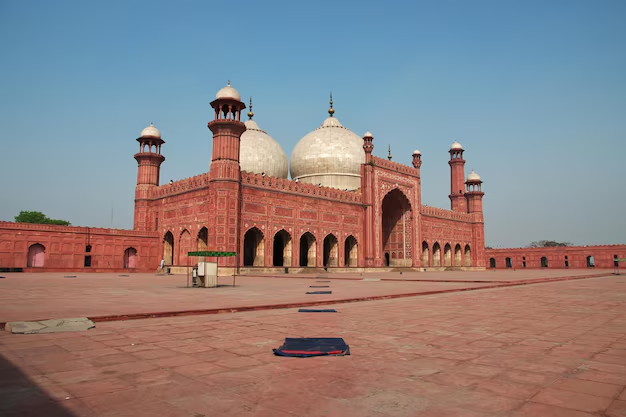

Agree: Punjab, the heartland of Pakistan, is dotted with historical buildings that tell stories of empires, faith, and artistry. From mighty forts to delicate mosques, every corner of the province reflects centuries of cultural exchange.
Promise: In this guide, you’ll uncover the fascinating history, architectural beauty, and travel insights about the most important historical buildings in Punjab Pakistan.
Preview: We’ll walk through iconic landmarks like Lahore Fort, Shalimar Gardens, Badshahi Mosque, Rohtas Fort, Taxila, and more—plus share tips on visiting, architectural styles, and conservation efforts.
Table of Contents
Overview of Punjab’s Historical Architectural Heritage
Major Historical Periods and Influences
Punjab has witnessed multiple ruling dynasties—from the Mughal Empire and Sikh Kingdom to the British Raj. Each era left behind unique architectural marks. Mughal emperors like Akbar and Shah Jahan commissioned magnificent mosques and gardens, while Sikh rulers added gurdwaras and forts. The British introduced Indo-Saracenic architecture, blending European and local styles.
- Mughal Era (1526–1857): Grandeur in scale, domes, arches, and intricate tile work.
- Sikh Empire (1799–1849): Blend of Mughal influences with distinct Sikh motifs.
- British Colonial Period (1849–1947): Gothic revival and Indo-Saracenic public buildings.
Key Architectural Styles in Historical Buildings in Punjab Pakistan
The architecture of Punjab’s heritage reflects a fusion of local craftsmanship and imperial tastes. Common styles include:Indo-Islamic / Mughal Characterized by red sandstone, marble inlay, and symmetrical layouts. Sikh Architecture Use of domes, frescoes, and vibrant color detailing on facades. Colonial Architecture Public offices, educational institutions, and churches built with Gothic and neoclassical elements.
Iconic Historical Buildings in Punjab Pakistan
Lahore Fort and Shalimar Gardens
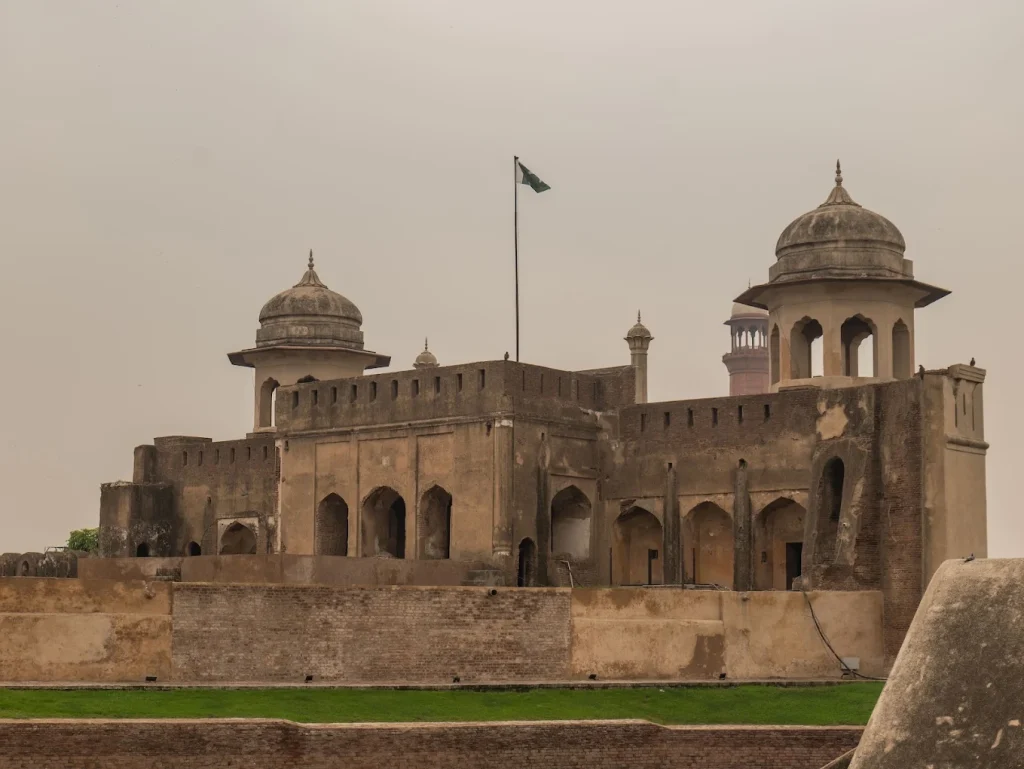

Lahore Fort, a UNESCO World Heritage Site, is one of the finest examples of Mughal military and residential architecture. Built and expanded by emperors Akbar, Jahangir, and Shah Jahan, it houses palaces, audience halls, and the famous Sheesh Mahal (Palace of Mirrors).
Nearby, the Shalimar Gardens showcase Persian-style terraced gardens with flowing water channels and fountains. Designed by Shah Jahan in 1641, these gardens symbolize the Mughal love for symmetry, leisure, and nature.
Badshahi Mosque: An Icon among Historical Buildings in Punjab Pakistan
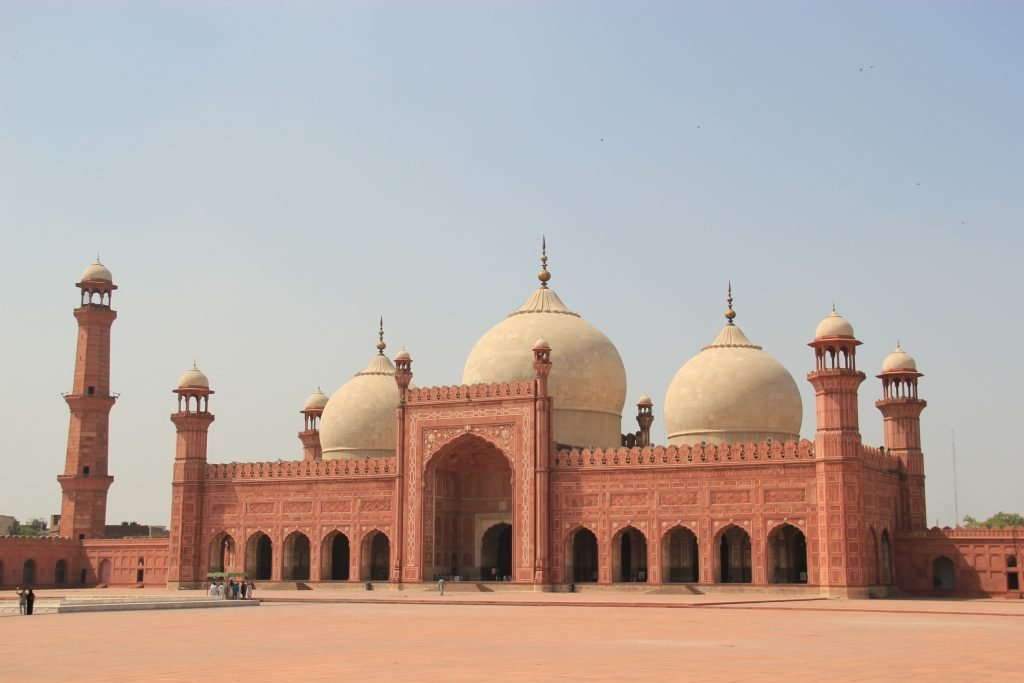

Commissioned by Emperor Aurangzeb in 1673, the Badshahi Mosque is famed for its vast courtyard, red sandstone façade, and white marble domes. It once held the title of the largest mosque in the Indian subcontinent.
- Why it matters: Masterclass in Mughal scale, symmetry, and acoustics.
- Don’t miss: The prayer hall’s carved marble and inlay work.
- Learn more: See UNESCO context for Mughal Lahore via World Heritage documentation.
Wazir Khan Mosque: Frescoes that Define Historical Buildings in Punjab Pakistan
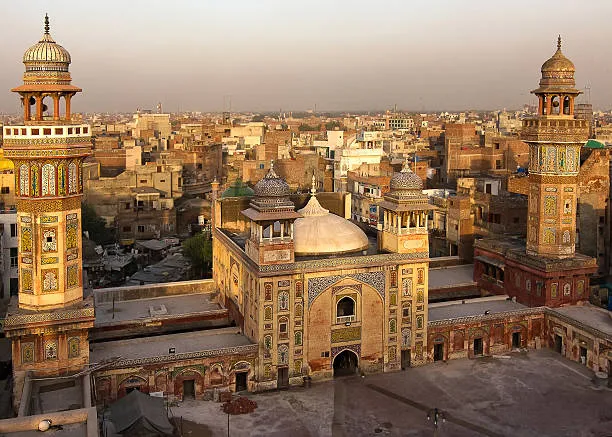

Built under Shah Jahan’s reign (1634–1641), Wazir Khan Mosque is a living gallery of kashi-kari (glazed tile work), calligraphy, and frescoes. Its bustling courtyard and surrounding bazaar preserve Lahore’s urban fabric.
- Signature feature: Multi-hued tiles and Persian-inspired motifs.
- Tip: Visit early morning for soft light on the frescoes.
- Background: Historical notes via the encyclopedia entry.
Rohtas Fort: Military Marvel among Historical Buildings in Punjab Pakistan
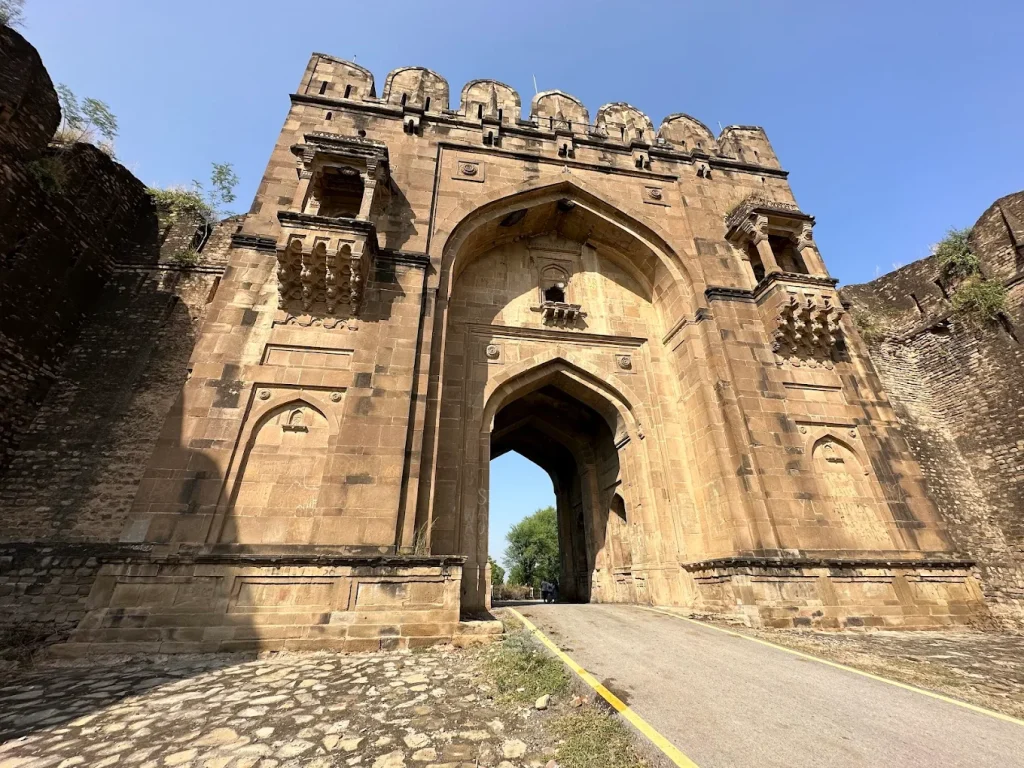

Rohtas Fort (1541–1548), founded by Sher Shah Suri near Jhelum, fuses Afghan-Turkic defensive planning with South Asian masonry traditions. Its colossal gateways—Sohail and Kabuli—showcase strategic siting and engineering.
- Standout: 4 km circuit of walls with 68 bastions and 12 gates.
- Why go: Uncrowded, photogenic vistas of ramparts and valleys.
- Reference: See UNESCO Rohtas Fort dossier.
Derawar Fort: Desert Sentinel of Historical Buildings in Punjab Pakistan
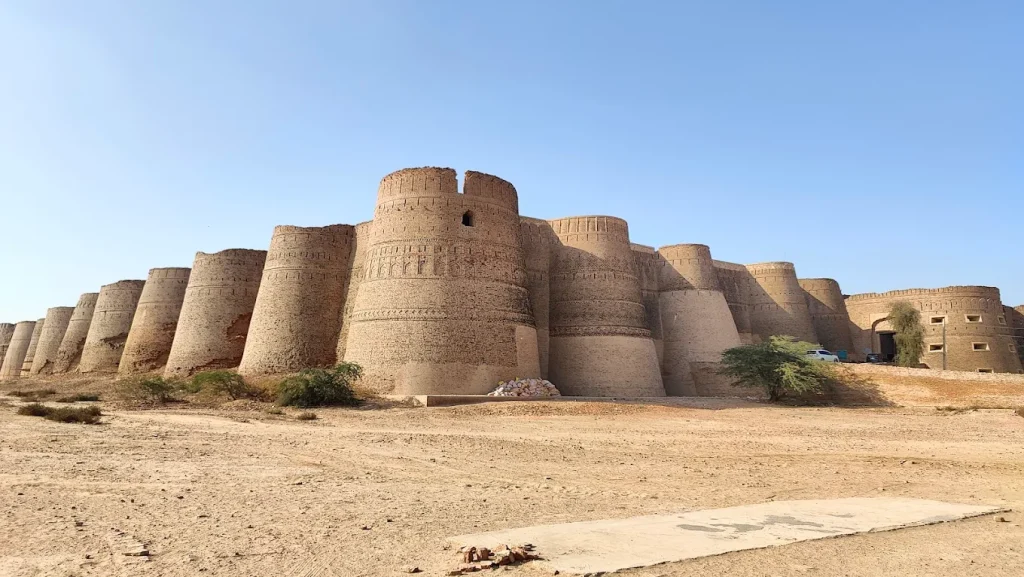

Located in the Cholistan Desert, the square-plan Derawar Fort is ringed by 40 towering bastions. Its commanding mud-brick silhouette contrasts starkly with the dunes—an unforgettable sight at golden hour.
- Good to know: Road access from Bahawalpur; 4×4 helpful after rains.
- Photospot: North-west bastions at sunrise.
- Context: Regional heritage via Punjab Tourism.
Taxila: Ancient Heart of Historical Buildings in Punjab Pakistan
A nexus of Gandharan culture, Taxila holds monasteries, stupas, and urban ruins (Sirkap, Sirsukh, Jaulian). The site reflects Greco-Buddhist art and urban planning from 6th century BCE to 5th century CE.
- Highlights: Jaulian monastery, Dharmarajika stupa, Sirkap grid plan.
- Museum tip: Taxila Museum’s sculpture galleries are a must-see.
- Authority: UNESCO Taxila listing.
Tombs & Mausoleums Shaping Historical Buildings in Punjab Pakistan
Royal and Sufi heritage converge in Punjab’s mausoleums—Tomb of Jahangir (Shahdara), Noor Jahan, and the Mausoleum of Shah Rukn-e-Alam (Multan) with its distinctive octagonal, glazed-brick profile.
- Design notes: Pietra dura marble inlay (Jahangir); Multani glazed tiles (Shah Rukn-e-Alam).
- Visitor tip: Dress modestly; check prayer times in active shrines.
- Further reading: Tomb of Jahangir, Shah Rukn-e-Alam.
Architectural Features and Styles Explained
Mughal Signatures across Historical Buildings in Punjab Pakistan
Expect axial symmetry, iwans, cusped arches, charbagh gardens, and lavish surface treatments—marble inlay (pietra dura), muqarnas, and fresco.
- Plan & space: Hierarchical courtyards and procession routes.
- Material palette: Red sandstone, white marble, lime plaster, kashi tiles.
- Exemplar: Sheesh Mahal at Lahore Fort; Shalimar’s terraced waterworks.
Sikh & Colonial Layers in Historical Buildings in Punjab Pakistan
Sikh-period structures retain Mughal grammar but emphasize fresco cycles, gilding, and civic works; colonial designs introduce Indo-Saracenic and Gothic revival vocabularies for courts, railways, and colleges.
- Sikh era: Decorative frescoes, ribbed domes, fortified urban gates.
- Colonial era: Pointed arches, clock towers, verandahs, cast-iron elements.
- City walk idea: Contrast colonial façades on The Mall with Mughal cores in the Walled City of Lahore.
Materials & Craft in Historical Buildings in Punjab Pakistan
From hand-pressed bricks and lime mortar to faience tiles and carved marble, traditional crafts underpin longevity and style.
- Conservation tip: Lime-based mortars breathe; cement replacements can trap moisture.
- Where to see: Tile kilns near Lahore; restoration workshops around Wazir Khan Mosque.
- Learn: Background via Punjab Government Heritage portal.
Visiting Punjab’s Historical Sites
Access, Transport, and Entry for Historical Buildings in Punjab Pakistan
Lahore is the primary hub (air/rail). Day trips connect to Rohtas (Jhelum) and Taxila (Rawalpindi/Islamabad corridor). Entry fees vary; museums may require separate tickets.
- Best seasons: Oct–Mar (mild); avoid peak midday heat.
- Etiquette: Respect prayer areas; photography rules differ by site.
- Official info: Check TDCP updates and Punjab Tourism.
Smart Itineraries for Historical Buildings in Punjab Pakistan
48-Hour Lahore Heritage Sprint for Historical Buildings in Punjab Pakistan
Only two days? No problem—here’s a tight loop that still hits the greats.
- Day 1 (AM): Lahore Fort → Sheesh Mahal → Alamgiri Gate walkout to Badshahi Mosque.
- Day 1 (PM): Walled City bazaar lanes → Wazir Khan Mosque fresco tour.
- Day 2 (AM): Shalimar Gardens (soft morning light) → Museum stop for context.
- Day 2 (PM): Colonial Mall Road façades walk for contrast (GPO, Tollinton Market, colleges).
Pro tip: Group nearby sites to cut transit time. Early starts beat crowds and harsh light.
4–5 Day Circuit of Historical Buildings in Punjab Pakistan
Want the “big picture”? This loop stacks eras and styles for a richer narrative.
- Day 1–2: Lahore core (Fort, Badshahi, Wazir Khan, Shalimar, The Mall).
- Day 3: Rohtas Fort (Jhelum)—military planning and monumental gates.
- Day 4: Taxila—Gandharan sites + museum for Greco-Buddhist art.
- Optional Day 5: Derawar Fort (Bahawalpur)—desert bastions for a dramatic finale.
Logistics note: Base yourself in Lahore/Islamabad; add a Bahawalpur leg only if time/transport allow.
Quick Comparison: Styles across Historical Buildings in Punjab Pakistan
| Era / Style | Hallmarks | Representative Sites |
|---|---|---|
| Mughal (Indo-Islamic) | Axial symmetry, domes, iwans, pietra dura, charbagh | Lahore Fort (Sheesh Mahal), Shalimar Gardens, Badshahi Mosque |
| Sikh | Fresco cycles, gilding, ribbed domes, urban gates | Walled City restorations, Sikh-period additions in Lahore |
| Colonial (Indo-Saracenic/Gothic) | Pointed arches, towers, verandahs, hybrid ornament | The Mall ensemble (GPO, historic colleges, museums) |
| Gandharan / Ancient | Monastic grids, stupas, Greco-Buddhist sculpture | Taxila (Sirkap, Sirsukh, Jaulian) |
Why this matters: Seeing these side by side sharpens your eye for plans, materials, and motifs.
Myth vs Fact about Historical Buildings in Punjab Pakistan
- Myth: “Badshahi Mosque is entirely marble.”
Fact: It uses red sandstone with marble elements (notably in the prayer hall and domes). - Myth: “Rohtas Fort is a Mughal palace.”
Fact: It’s primarily a 16th-century military fortification founded by Sher Shah Suri. - Myth: “Taxila is one single site.”
Fact: It’s a complex of multiple sites and periods, best understood with the museum visit.
FAQ
What are the must-visit historical buildings in Punjab Pakistan?
Start with Lahore Fort, Badshahi Mosque, Wazir Khan Mosque, Shalimar Gardens, Rohtas Fort, and the Taxila complex. Add Shahdara tombs and Shah Rukn-e-Alam (Multan) if time allows.
How can I plan a 3-day route for historical buildings in Punjab Pakistan?
Base in Lahore for two days (Fort, Badshahi, Wazir Khan, Shalimar, The Mall). Day three: Rohtas Fort (Jhelum) or Taxila (museum + key ruins). Start early and cluster nearby sites.
What’s the best season to visit historical buildings in Punjab Pakistan?
October to March offers mild weather and better walking light. Summer afternoons can be harsh—aim for mornings or late afternoons.
Are there entry fees or photography rules at historical buildings in Punjab Pakistan?
Yes—fees vary by site, and museums may require separate tickets. Tripods or drone use often needs permission. Check official portals before visiting.
Is public transport practical for historical buildings in Punjab Pakistan?
In Lahore, rideshare and taxis work well. For Rohtas and Derawar, private cars are more efficient. Taxila is accessible via Islamabad–Rawalpindi corridor, then local transport to sites.
Accommodation Near Key Sites for Historical Buildings in Punjab Pakistan
Base yourself near Lahore’s Walled City to walk to Lahore Fort, Badshahi Mosque, and Wazir Khan Mosque. For Rohtas Fort (Jhelum) and Taxila, consider overnighting in Islamabad/Rawalpindi for early starts. Bahawalpur is the practical gateway to Derawar Fort.
- Where to check: Punjab Tourism for official advisories; traveler reviews on TripAdvisor.
- Proximity picks: Old Lahore guesthouses for heritage walks; Islamabad for Taxila museum-and-sites combo.
- Timing: Book weekends and festival periods early; sunrise/sunset slots are best for photography.
Preservation and Challenges for Historical Buildings in Punjab Pakistan
Current Conservation Efforts in Historical Buildings in Punjab Pakistan
Multiple public and partner bodies—Archaeology Department Punjab, Walled City of Lahore Authority, and UNESCO programs—support documentation, structural stabilization, and surface conservation. Priority works often include lime-mortar repairs, tile conservation (kashi-kari), drainage, and visitor circulation upgrades.
- Where to follow updates: UNESCO Pakistan listings and TDCP World Heritage page.
- Why it matters: Correct materials (lime vs. cement) and water management directly affect longevity.
Visitor Impact and Sustainability for Historical Buildings in Punjab Pakistan
High footfall, vehicle vibrations near old foundations, and uncontrolled humidity from crowds can accelerate decay. Responsible tourism helps: stay on marked paths, avoid touching frescoes, and respect photography limits.
- Low-impact tips: Use guided routes, carry reusable water bottles, and schedule off-peak visits.
- Support: Consider licensed local guides and heritage-friendly businesses that reinvest in conservation.
Ending Note: Why You Should Visit Historical Buildings in Punjab Pakistan
From the mirrored palaces of Lahore Fort to the desert bastions of Derawar and the ancient learning centers of Taxila, Punjab compresses millennia of design, faith, and power into walkable stories. Study the plans, admire the surfaces, and meet the craftspeople who keep these places alive.
Ready to explore? Start with our curated routes and planning checklists—then build your own journey through time.
UNESCO in Pakistan | Mughal Architecture Guide
About the Author
Author: ZunNurain Khalid — Travel & Tourism Specialist, Founder of ExploreX Pvt. Ltd., and advocate for sustainable tourism in Pakistan. With over a decade of experience in digital marketing and destination branding, ZunNurain has worked extensively on promoting Pakistan’s natural and cultural heritage.
References
- UNESCO: Fort and Shalamar Gardens in Lahore
- UNESCO: Rohtas Fort
- UNESCO: Taxila
- Punjab Tourism: Historical Sites
- Punjab Government Portal: Historical Landmarks
- Encyclopedia: Wazir Khan Mosque
- Encyclopedia: Badshahi Mosque
- TDCP: World Heritage Sites (Punjab)
- TripAdvisor: Sights & Landmarks in Punjab

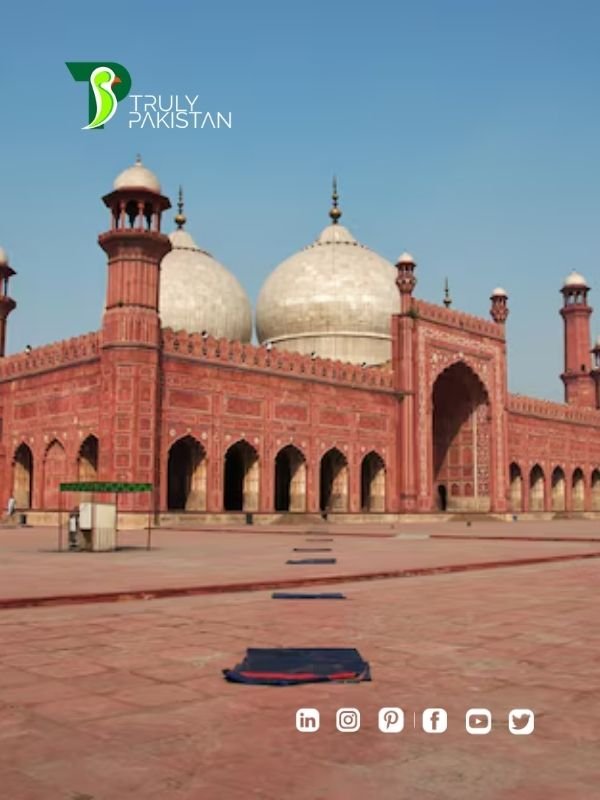
One thought on “Historical Buildings in Punjab Pakistan: Ultimate Guide”